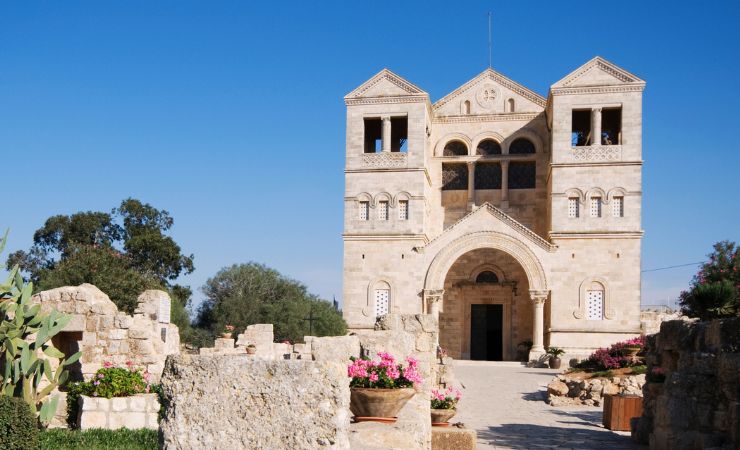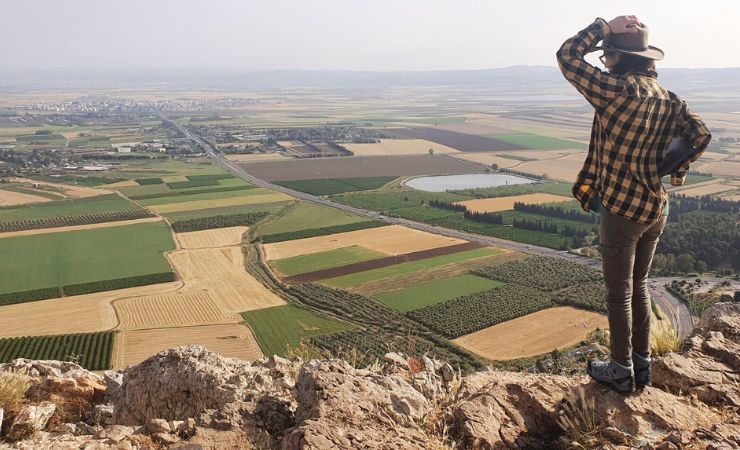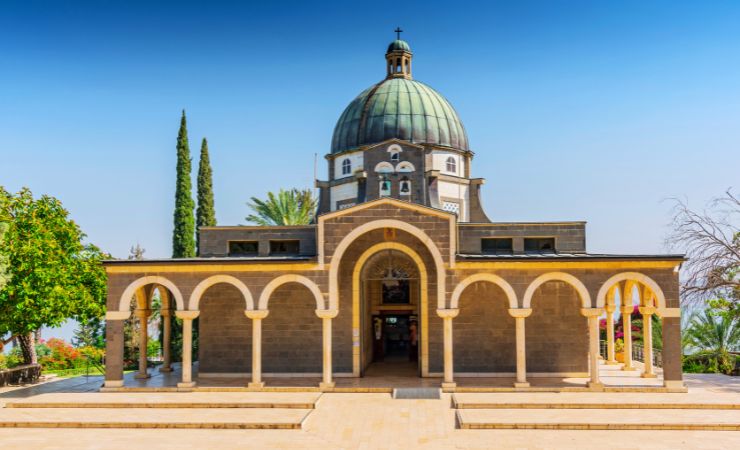Corazim: The City that Jesus reproached
Corazim (Korazim or Chorasin) stands as a significant landmark for both historians and followers of Christianity, its roots intertwined with the teachings of Jesus. It is here Jesus reproached the city’s inhabitants’ lack of faith.

Location
Corazim, also known as Chorazin, is situated in the northern part of Israel, just 2 miles north of Capernaum. Perched on a hill overlooking the northern shore of the Sea of Galilee, it forms part of the “Evangelical Triangle,” which also includes Capernaum and Bethsaida.
Biblical context
Corazim holds a significant place in the New Testament, particularly in the Gospel of Matthew. Jesus reproaches the city for the inhabitants’ lack of faith despite the miracles performed there. In Matthew 11:21, Jesus reproaches the city, along with Bethsaida and Capernaum, for their lack of faith despite the miracles performed there.
The verse reads:
Woe to you, Chorazin! Woe to you, Bethsaida! For if the mighty deeds done in your midst had been done in Tyre and Sidon,* they would long ago have repented in sackcloth and ashes
In the late Roman period (4th Century CE), the city was destroyed, most probably in an earthquake as appears in the writings of Eusebius, a renowned historian of Christianity. To many, the destruction of the city is seen as a testament to the accuracy of Jesus’ prophecies.



Corazim during the Byzantine period
During the Byzantine period, Corazim, was rebuilt and was a bustling Jewish town. The town was known for its high-quality wheat as mentioned in the Talmud (Menahot 85a). The Talmud also introduces us to a Rabbi from Corazin, Joseph ben Isaac Bekhor Shor, further cementing the town’s place in religious texts.
The town continued to thrive until the 8th century when a combination of the Islamic conquest, economic shifts, and possibly another earthquake led to its decline.
The Talmud (Erubin 54b) suggests that the town was cursed due to its inhabitants’ manipulation of the laws of ‘Erubin. The Jerusalem Talmud adds another layer to the story, stating that the town was destroyed because it lacked scholars.
Sources and Additional Reading:
Encyclopedia – Corazin
BibleWalks – Korazim
Archeological Findings
- The Synagogue: The most prominent archaeological feature in Corazim is the remains of a synagogue. This large building, divided into four parts by three rows of columns, was first excavated between 1906 and 1909 by German archeologists H. Kohl and C. Watzinger. The site was initially identified Edward Robinson following during his trip to the Holy Land in 1852. The synagogue was built in the form of a basilica (24 × 17 m. or 79 X 56ft. in dimension), with its beautiful decorated façade turned southward toward Jerusalem. The hall contains two rows of columns along its length and one row along its width. Steps descended from a terrace in front of the synagogue, which was constructed of basalt stones.
- Sculpted Ornaments: Numerous sculpted ornaments were found in the synagogue, representing human beings, animals, and mythological figures such as Hercules, a Medusa, a centaur, and other scenes showing a soldier and a vintage.
- The Moses Seat: A stone chair found inside the synagogue may be a “seat (cathedra) of Moses” as mentioned in Matthew 23:2. It bears a Judeo-Aramaic inscription commemorating a benefactor named Judah, son of Ishmael, who made the colonnade and its stairs.
- Residential Structures and Olive Press: Several blocks of houses were found at a short distance from the synagogue, one containing a large oil press. These structures provide insights into the domestic life and agricultural practices of Corazim’s ancient residents.
Nearby Sites
- Capernaum: Known as the “Town of Jesus,” Capernaum is a must-visit site for its ancient synagogue and the House of Peter.
- Bethsaida: Another city in the Evangelical Triangle, Bethsaida is believed to be the birthplace of several apostles and a site of Jesus’ miracles.
- Mount of Beatitudes: This serene location is traditionally believed to be where Jesus delivered the Sermon on the Mount. The Church of Beatitudes is located on the mount.
- Tabgha: Known for the Church of the Multiplication, Tabgha is believed to be the site of Jesus’ miracle of feeding the 5,000.
- Domus Galilaeae: Situated in the tranquil hills of northern Israel, provides a peaceful haven where individuals can engage in prayer and introspection.



